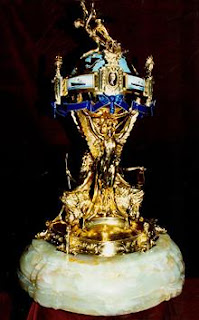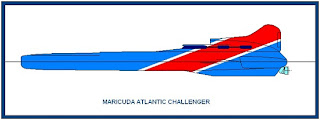Attempts to win the coveted Hales Trophy, often referred to as the Blue Riband, a prize awarded to the ship which makes the fastest crossing of the Atlantic have been numerous and at times, controversial.
The liner United States was the last passenger liner to capture the record but the first vessel other than a regular liner to receive the trophy was the catamaran ferry Hoverspeed Great Britain when she established a new speed record for a commercial vessel on her eastbound delivery voyage without passengers in 1990 with an average speed achieved of 41.28knots. The event a massive test of endurance and reliability took the ferry 3 days 7 hours to complete but the maritime museum in New York refused to give up the trophy.
Subsequently Destriero a 68 metre superyacht was constructed at the Fincantieri yard in Italy in 1992 with a view to winning the Trophy. She was chartered by the Yacht Club Costa Esmeralda, whose patron is the Aga Khan, with the intension of capturing the Trophy from the British.
With a top speed of 62kt and powered solely by three gas turbine General Electric LM 1600 units jointly developing 54,000bhp and powering the yacht using three water jet drives, she made the journey breaking the trans-Atlantic crossing record on August 9th 1992 with an average speed of 53,09 knots over 58 hours 34 minutes and 5 seconds.
However the Hales Trophy was denied to her as well because she was classed by her classification society as a private yacht and not a commercial passenger ship.
Now a new challenge has emerged. The British firm Maricuda has announced their goal to produce a craft that will sustain 70 knots over long distances, that will ensure the safety of its crew and passengers and capture the record and hopefully the Trophy.
The Maricuda high speed superyacht is to be an 80 metre twin gas turbine driven trimaran designed to demonstrate what is a safe, exceedingly fast mover of cargo or passengers, in all-weather conditions across oceans without re-fuelling. 3000 miles in under 2 days.


